- Blog
- Beating Temu: Strategies for Shopify Stores to Stay Ahead
Beating Temu: Strategies for Shopify Stores to Stay Ahead
-
Nikolett Lorincz
- Ecommerce
- 6 min read
Table of Contents
Temu is a fast-growing Chinese ecommerce platform that has made significant waves since its launch in the United States in September 2022.
They’re known for their aggressive marketing strategies and low prices.
Thanks to this, they’ve attracted a huge consumer base, including notable celebrities like Megan Fox, who admitted to being “a victim of Temu” on the Call Her Daddy podcast.
But what does this mean for your Shopify store? Is Temu taking over the American market? Why did they become so popular? And most importantly, how can you compete with them?
Let’s dive in and find out.
Why did Temu become so popular?
In 2023, TEMU was the top-performing shopping app globally. They collected 338 million downloads across the Apple App Store and Google Play Store.
But what made it so popular?
1. Right offer (affordable) at the right time
2022 was a year that could be best described as an economic rollercoaster.
Thanks to a mix of global unrest—COVID-19 aftermath, supply chain nightmares, and geopolitical tensions—the U.S. was wrestling with an 8.3% inflation rate.
Temu’s timing was perfect as they launched in the middle of this economic uncertainty. They weren’t just another online marketplace, they were a shining light for budget-conscious shoppers.
With their slogan “Shop like a billionaire,” Temu found exactly what their target audience was seeking.
2. Gamified shopping experience
Standing out in the ecommerce industry can be a challenge. That’s why Temu transformed shopping into a gamified journey.
Let’s take a look at some of the gamification strategies Temu uses:
- Incentives: Once users sign up, Temu offers them free gifts, coupon codes, and various in-app games.
- Playful integration: By integrating playful elements, they made shopping a delightful experience. Imagine plucking virtual fruit or winning prizes by spinning a wheel. That’s exactly what Temu allows users to do.
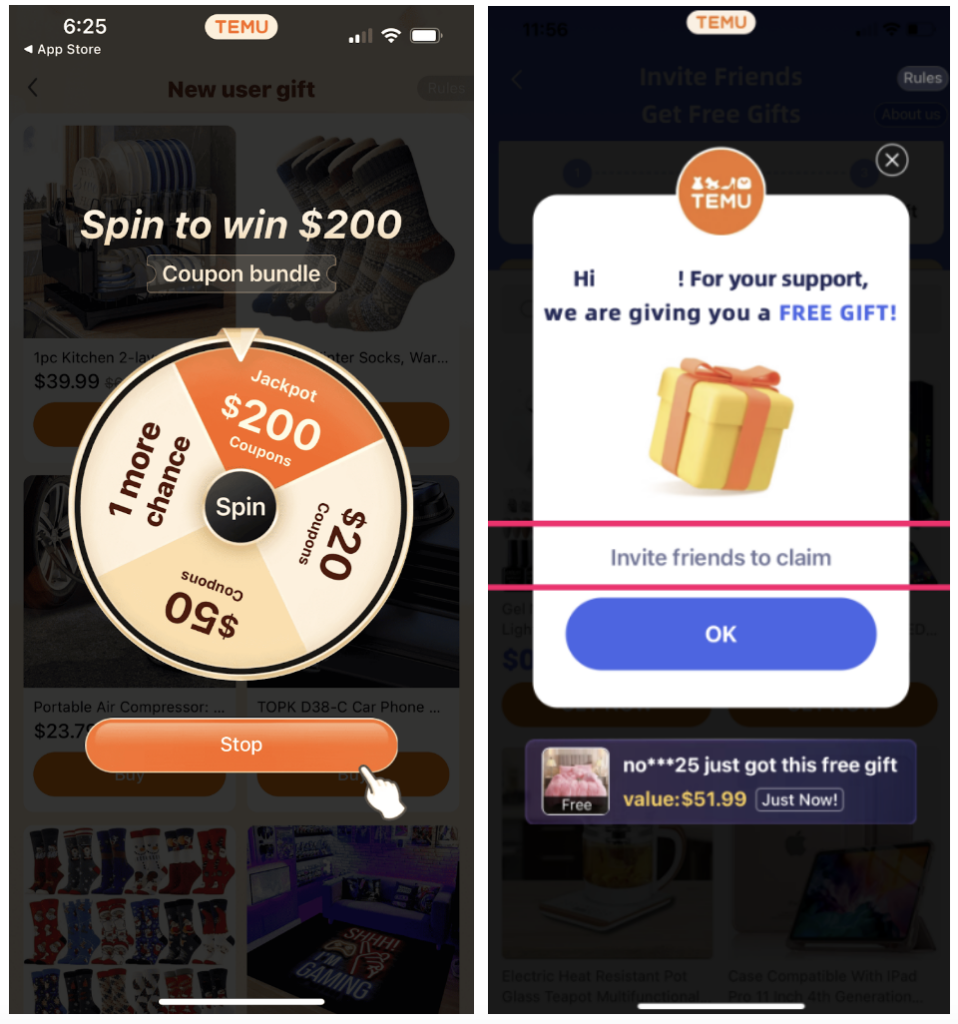
- Referral program: They encourage users to invite friends to join. This not only helps Temu acquire new customers at a low cost but also ensures existing users keep coming back.
- Social sharing: Temu incentivizes social sharing with a reward system. By encouraging users to share, they spread the word and build a community of loyal customers.
- Visual goal setting: The progress bar in Temu’s app visually represents goals, motivating users to engage more and earn rewards. Implementing similar visual cues is a great way to drive user interaction.
- Loyalty rewards: Temu rewards loyalty with tangible benefits. A loyalty program that recognizes engagement and purchases can foster lasting relationships between brands and consumers.
3. C2M
Another key factor behind Temu’s popularity lies in its approach to connecting consumers directly with manufacturers through a concept called C2M, or consumer-to-manufacturer.
C2M disrupts traditional retail by eliminating middlemen.
For consumers, C2M translates to better prices. By cutting out intermediaries, manufacturers can offer products at competitive rates.
On the manufacturer’s side, C2M streamlines the supply chain, reducing costs and improving efficiency. Without the need to navigate through multiple layers of distribution, products can reach consumers faster and at a lower cost.
4. Conscious expansion
While others shotgun their way into new markets with a “spray and pray” approach, Temu’s expansion was more like a well-thought-out game of chess.
They moved strategically from one region to another.
In the image below, you can see their global marketing entry timeline between Q4 2022 and Q4 2023.
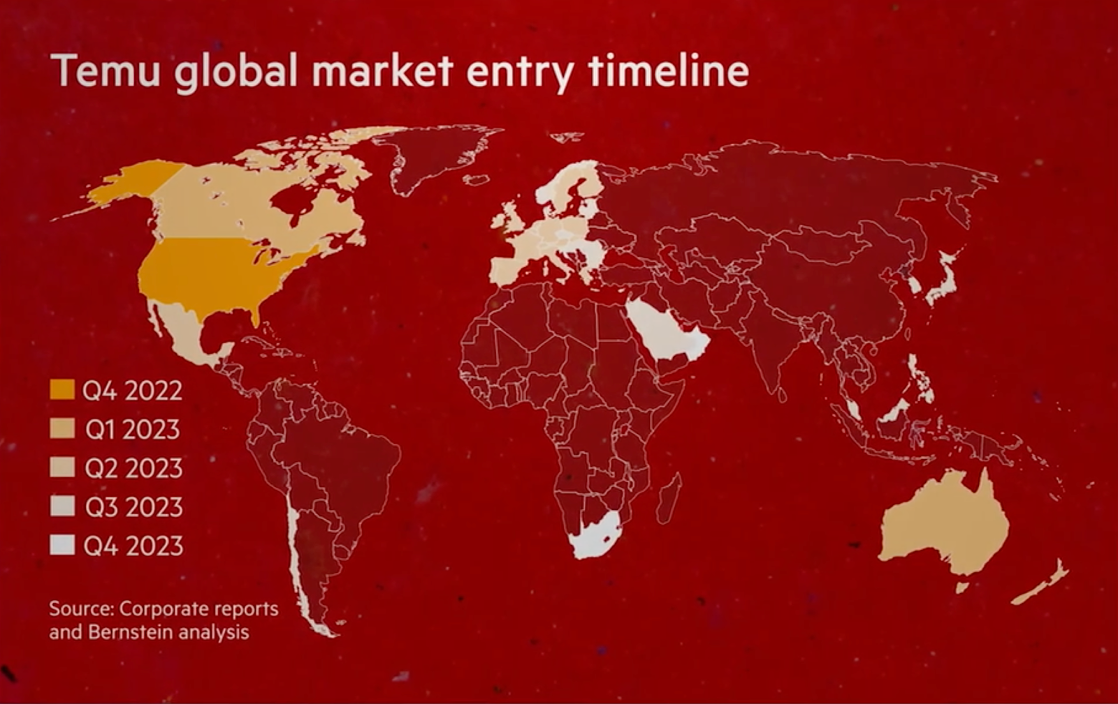
5. All-in marketing strategy
Ever felt like Temu’s ads were following you around? You weren’t imagining things.
From Super Bowl commercials that cost them $21 million to omnipresent social media ads, Temu made sure they were everywhere.
In fact, they were the biggest advertiser in the US in 2023. They spent billions of dollars!

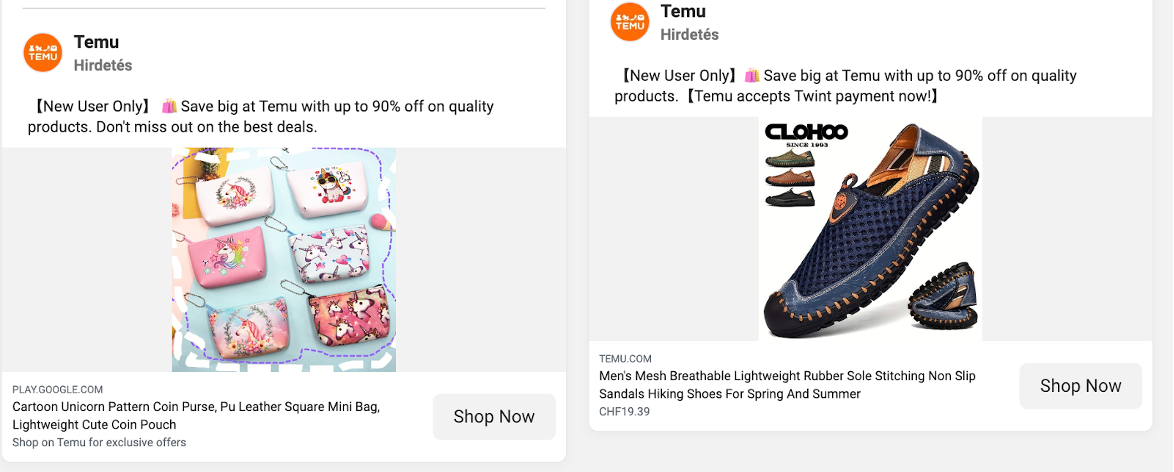
Their strategy was about making so much noise that no one could hear the competition.
Thanks to their massive investment in ads, Temu got millions of downloads, which was a clear win in the short term.
But the long game is all about monetization.
Researchers estimate that Temu made around $13 billion globally last year, but it may still be incurring a loss of $3.65 billion.
That’s a lot of money loss! So how can they keep this up in the long run?
The success or failure of Temu hinges on their ability to turn first-time buyers into repeat customers.
How to compete with Temu as a small business owner?
As a small business owner, competing with Temu’s massive marketing budget is impossible. Instead of trying to match their financial firepower, you need to employ alternative strategies.
1. Rethink your product strategy
As a small business owner, you should reevaluate your product strategies to stand out in the market.
Here are some key considerations:
- Differentiation: Identify what sets your products apart from those offered by competitors. Consider factors such as quality, unique features, or specialized services that you can offer to attract customers.
- Value proposition: Clearly define the value you bring to customers beyond just the products themselves. Whether it’s exceptional customer service, customization options, or a commitment to sustainability, highlighting your unique value proposition can help you attract and retain customers.
- Brand identity: If you’re not selling your own products, explore ways to establish a distinct brand identity that resonates with your target audience. This could involve curating a unique selection of products, partnering with niche suppliers, or crafting a compelling brand story.
- Strategic marketing: With Temu dominating Google Shopping Ads and other advertising channels, small business owners must adopt strategic marketing tactics to reach their target audience effectively. Explore alternative advertising platforms, leverage social media channels, or invest in search engine optimization to increase your visibility and attract potential customers.
2. Optimize the user journey
For small businesses aiming to compete effectively in the online marketplace, improving the customer journey is essential.
Here are a couple of things to keep an eye on when optimizing different stages of the user journey:
- Reduce customer acquisition cost (CAC): Efficiently managing your CAC is vital for sustainable growth. Consider strategies to minimize CAC while maintaining profitability, such as targeted advertising, referral programs, or partnerships with complementary businesses. Evaluate whether sacrificing initial profit margins to acquire new customers can lead to higher lifetime value (LTV) and average order value (AOV) over time.
- Build customer loyalty: Invest in retaining existing customers by implementing a robust customer loyalty program. Offer incentives, discounts, or exclusive perks to reward repeat purchases and encourage long-term engagement. Cultivate personal relationships with your customers through targeted communication and exceptional customer service to foster loyalty and advocacy.
- Expedite delivery time: While Temu may boast relatively short delivery times, small businesses can leverage local advantages to offer even faster shipping options. Explore partnerships with local couriers or fulfillment centers to streamline delivery processes and provide expedited shipping services to customers in your area. Emphasize the convenience and speed of local delivery as a competitive advantage over larger competitors.
Watch Scott Cunningham’s webinar for more ideas on what to focus on at each stage of the user journey.
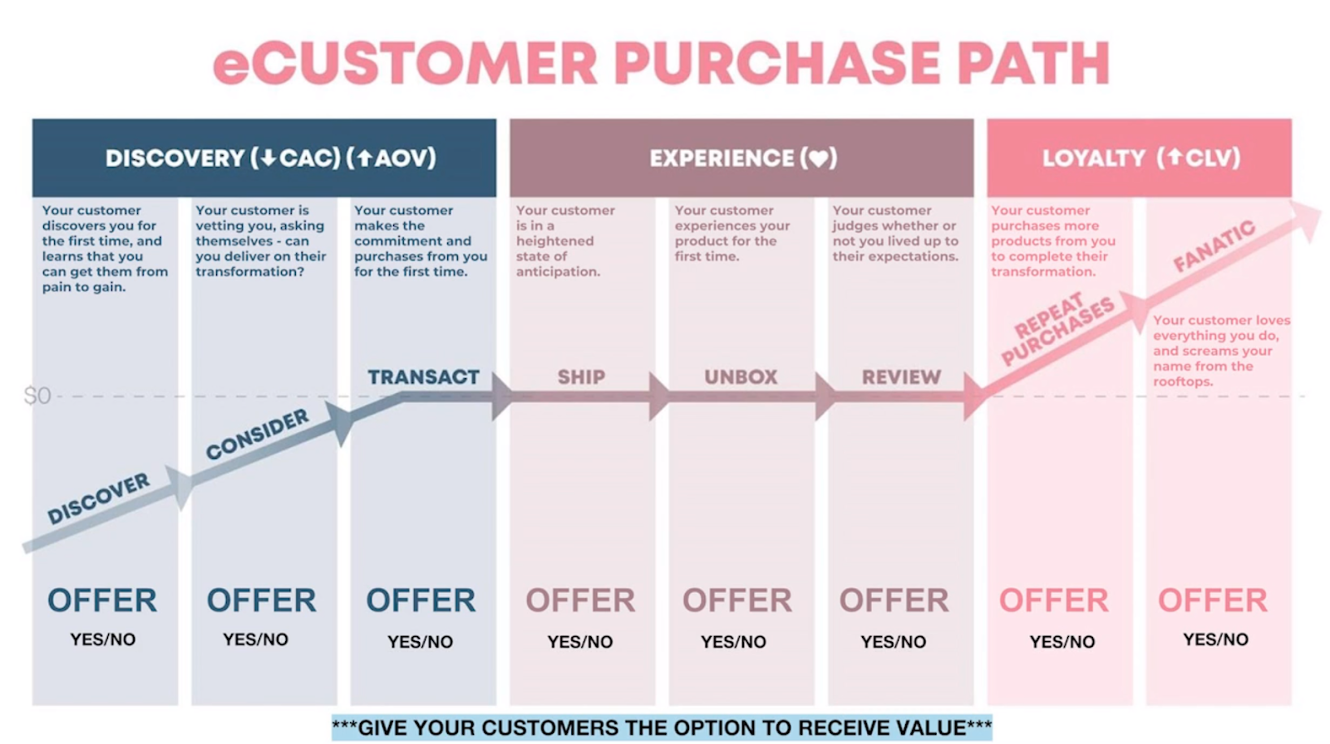
3. Focus on conversion rate optimization
Given the rising costs of digital advertising, it’s essential to maximize the value of every visitor to your site. This is where conversion rate optimization (CRO) comes in.
Instead of focusing only on attracting more traffic, you should focus on improving your website to get more conversions.
The easiest way to improve conversions is to A/B test your value propositions and headlines to see which grabs attention best.
When you try different headlines, you’ll be able to see what clicks with your audience. The best part is that you’ll be making data-driven decisions instead of just relying on gut feelings.
Take Crown & Paw for example. They played around with four different headlines on their homepage. And they achieved a 16% increase in orders with this one simple A/B test.
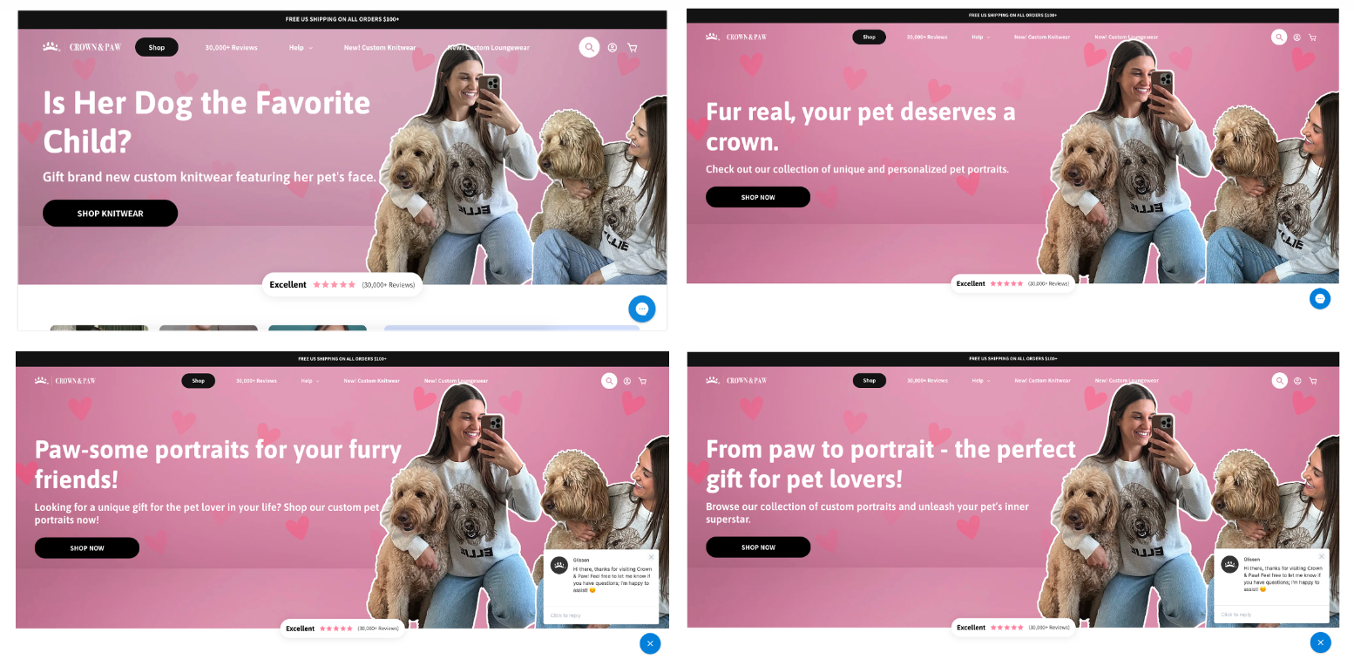
Now, imagine what you could achieve if you did the same on all your landing pages!
Sure, it might sound like a hassle to constantly tweak and test, but it doesn’t have to be. With our AI-powered Smart A/B testing tool, it’s as easy as pie. So why not give it a shot? You could be pleasantly surprised by the results.
Another important part you should focus on when it comes to CRO is your product pages.
Product pages have huge potential: this is where the action happens on your ecommerce site. They’re like a storefront window—if they’re not appealing, customers simply won’t stick around.
What’s more, most people skip the homepage and head straight to the product pages from ads, meaning that’s where you need to make an impact.
Well-optimized product pages are visually appealing, benefit-focused, and provide all the necessary information to help customers make informed purchasing decisions.
Take a look at how Varnish & Vine optimized its product pages.
Before, their product pages were a bit “blah.” They’d been using the product names as the main headline and didn’t really offer any other useful information in the above-the-fold section.
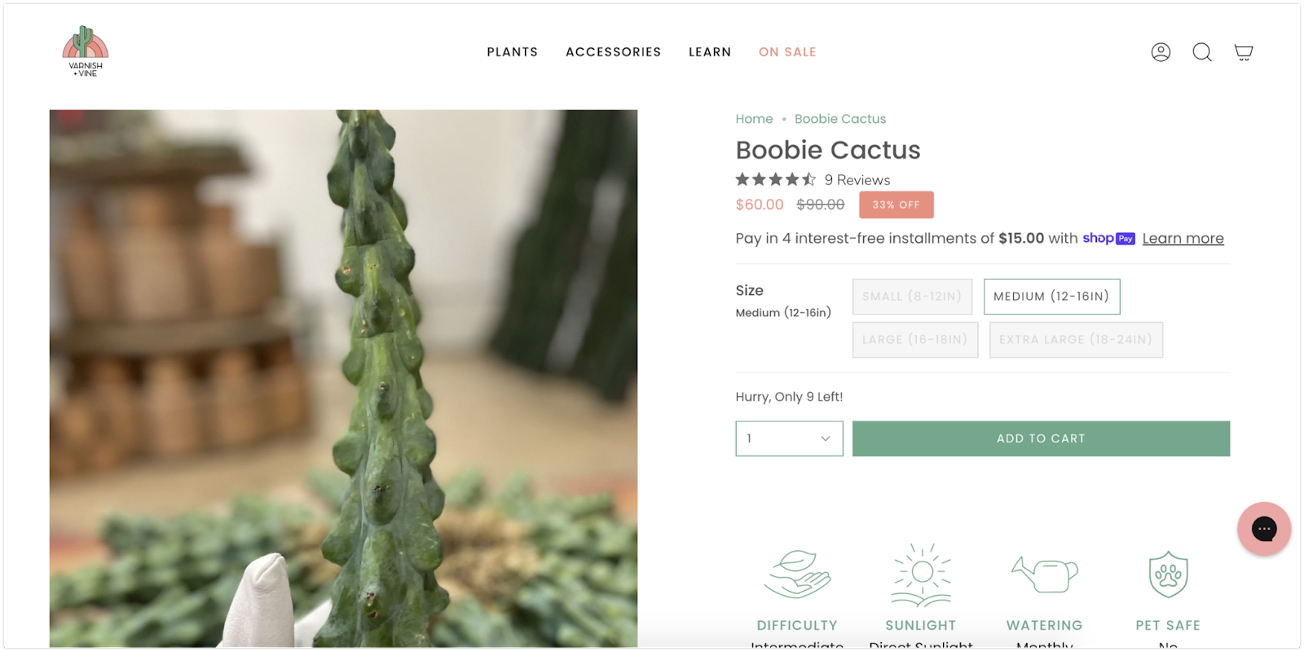
But they stepped it up, adding new headlines and benefit lists that spoke directly to their audience.
This is what the updated product pages looked like:
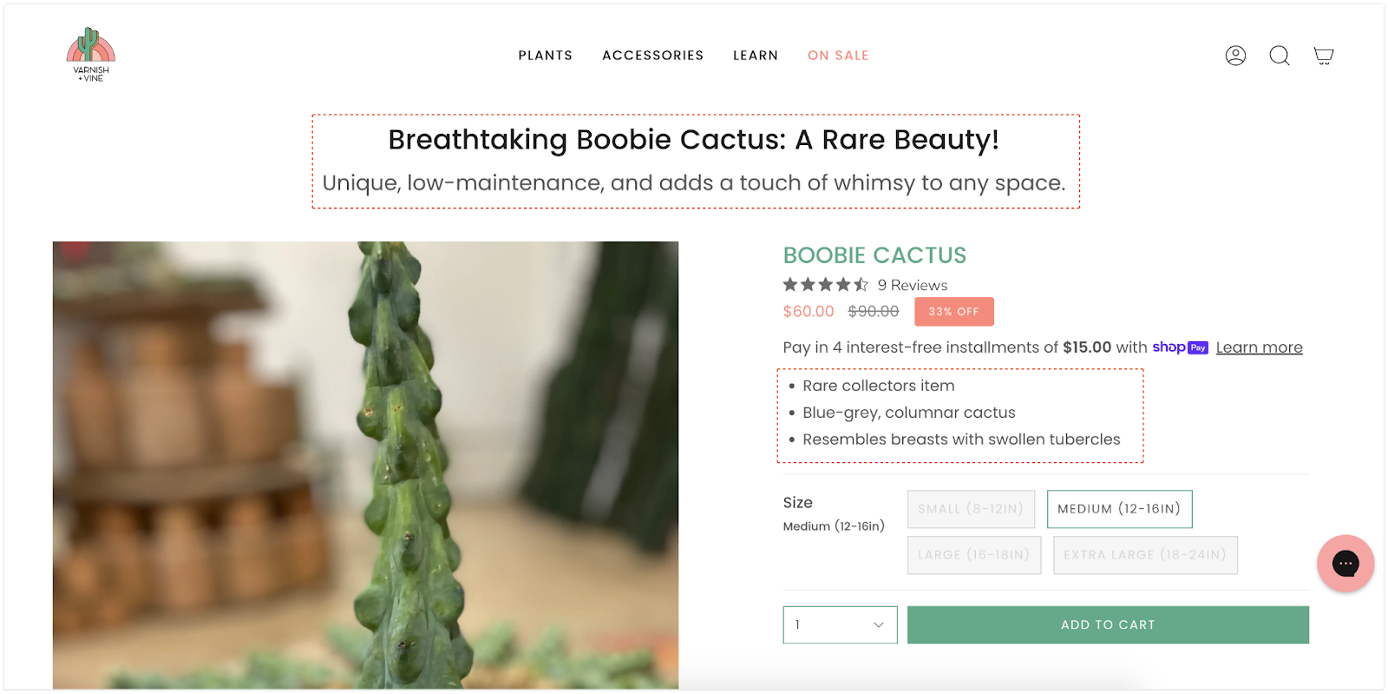
This resulted in a 12% increase in orders and an impressive 43% increase in revenue.
And get this—they didn’t spend hours manually tweaking each page. They used the Smart Product Page Optimizer and automated the whole process with AI!
4. Use list-building & gamification popups
Have you ever heard of the 3/47/50 rule in ecommerce?
It means that:
- only 3% of your visitors are ready to buy right away,
- 47% of visitors are not ready to buy yet but might purchase in the future,
- and 50% of visitors will never buy.
You need to make sure that you convert those 47% of visitors into email subscribers so you can encourage them via emails to buy from you later.
Popups are a great way to do this if they’re well designed, non-intrusive, and offer genuine value to the user.
Here’s a recipe for the perfect email popup:
- Swap out your boring “10% off” for a “mystery discount.” People love surprises, which is why framing it this way can really tap into people’s natural curiosity and generate a lot of interest.
- Throw in a question at the second step of the popup. For customers, it feels more engaging. And for you, the information you gather will help you tailor those email promos just for them.
- Add a personalized product recommendation to the thank you page with the discount code.
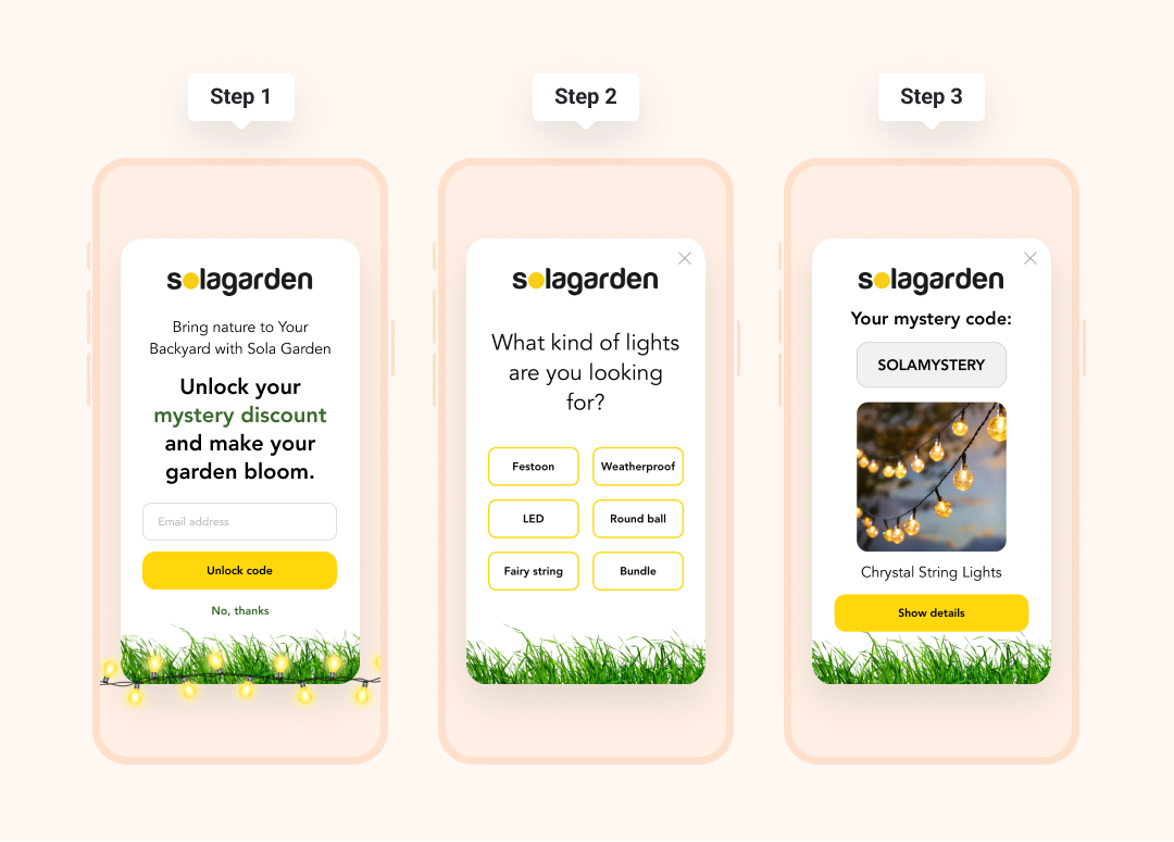
Trust us, if you follow this recipe, your subscriber rate will skyrocket.
Here are some templates to get you started:
If you’d like to gamify the user experience just like Temu does, you can try these gamified popups:
Wrapping up
While you may not be able to use the sheer size of your marketing budget to dominate the advertising space like Temu, there are alternative strategies you can employ to compete effectively.
Focus on product differentiation, user journey optimization, conversion rate optimization, and effective list-building and gamification techniques.
By staying focused, understanding your audience, and continuously optimizing your website, you can carve out your own space in the competitive ecommerce landscape—even in the shadow of giants like Temu.
Migration has never been easier
We made switching a no-brainer with our free, white-glove onboarding service so you can get started in the blink of an eye.

What should you do next?
Thanks for reading till the end. Here are 4 ways we can help you grow your business:
Boost conversions with proven use cases
Explore our Use Case Library, filled with actionable personalization examples and step-by-step guides to unlock your website's full potential. Check out Use Case Library
Create a free OptiMonk account
Create a free OptiMonk account and easily get started with popups and conversion rate optimization. Get OptiMonk free
Get advice from a CRO expert
Schedule a personalized discovery call with one of our experts to explore how OptiMonk can help you grow your business. Book a demo
Join our weekly newsletter
Real CRO insights & marketing tips. No fluff. Straight to your inbox. Subscribe now
Nikolett Lorincz
- Posted in
- Ecommerce
Partner with us
- © OptiMonk. All rights reserved!
- Terms of Use
- Privacy Policy
- Cookie Policy
Product updates: January Release 2025








